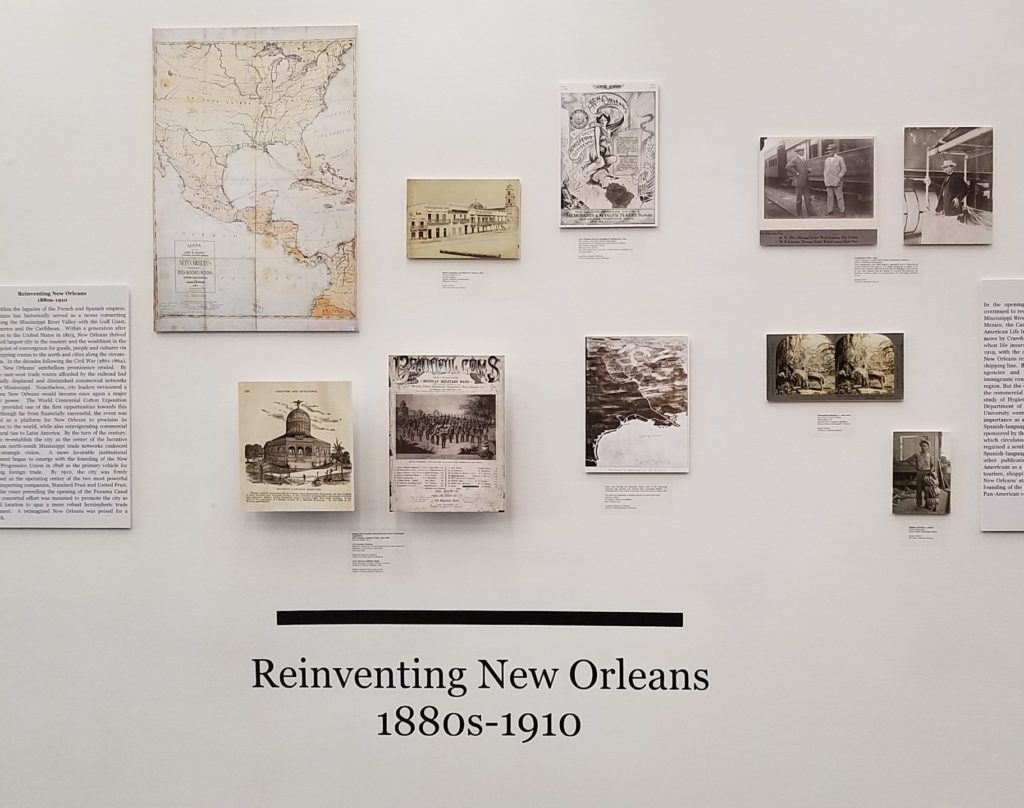Forged within the legacies of the French and Spanish empires, New Orleans has historically served as a nexus connecting points along the Mississippi River Valley with the Gulf Coast, Latin America and the Caribbean. Within a generation after annexation to the United States in 1803, New Orleans thrived as the third largest city in the country and the wealthiest in the South, a point of convergence for goods, people and cultures via inland shipping routes to the north and cities along the circum-Caribbean. In the decades following the Civil War (1861-1864), however, New Orleans’ antebellum prominence eroded. By 1900, the east-west trade routes afforded by the railroad had substantially displaced and diminished commercial networks along the Mississippi. Nonetheless, city leaders envisioned a time when New Orleans would become once again a major economic power. The World Centennial Cotton Exposition (1884-5) provided one of the first opportunities towards this goal. Although far from financially successful, the event was conceived as a platform for New Orleans to proclaim its resurgence to the world, while also reinvigorating commercial and cultural ties to Latin America. By the turn of the century, efforts to re-establish the city as the center of the lucrative antebellum north-south Mississippi trade networks coalesced into a strategic vision. A more favorable institutional environment began to emerge with the founding of the New Orleans Progressive Union in 1898 as the primary vehicle for promoting foreign trade. By 1910, the city was firmly established as the operating center of the two most powerful banana-importing companies, Standard Fruit and United Fruit. And in the years preceding the opening of the Panama Canal (1914) a concerted effort was mounted to promote the city as the ideal location to spur a more robust hemispheric trade environment. A re-imagined New Orleans was poised for a comeback.
The gallery of images available below provides a visual narrative of the period between 1880 and 1910.

The physical exhibit at The Latin American Library, 2019-2020.